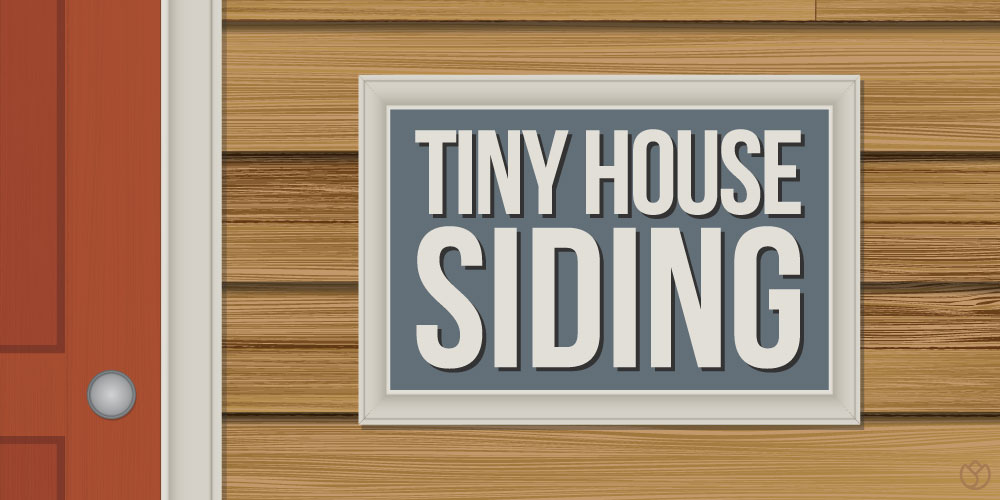
Tiny house siding is one of those things that can have a huge impact on the look and maintenance of your tiny home in the long term. When I built my tiny house, I sided it with cedar clapboard siding and, while I’m pretty happy with it, I wish I had known about other tiny house siding options.
NAVIGATION
Choosing The Right Tiny House Siding Material

In this case, I don’t think there is necessarily a “best” siding material, but there certainly is a “right for me” material. The two biggest factors are the right style for your home and what your budget is.
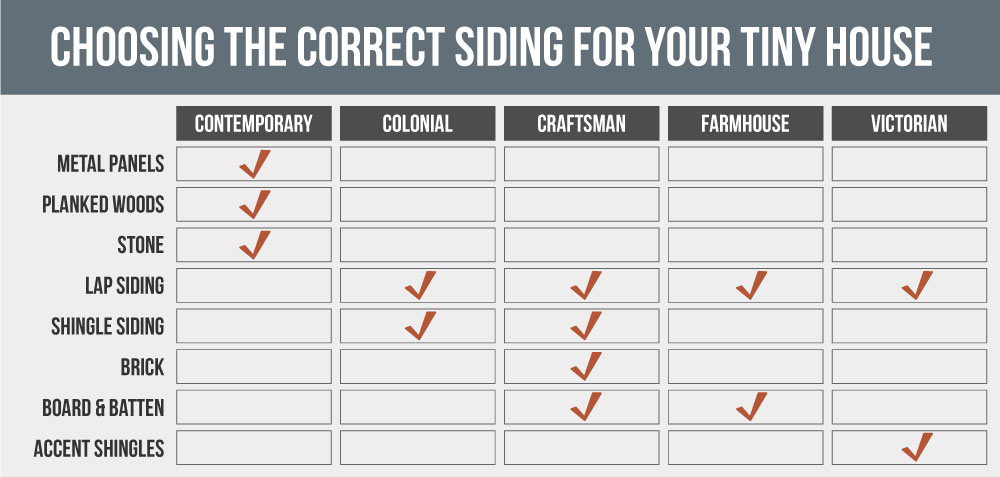
Tiny House Siding Styles

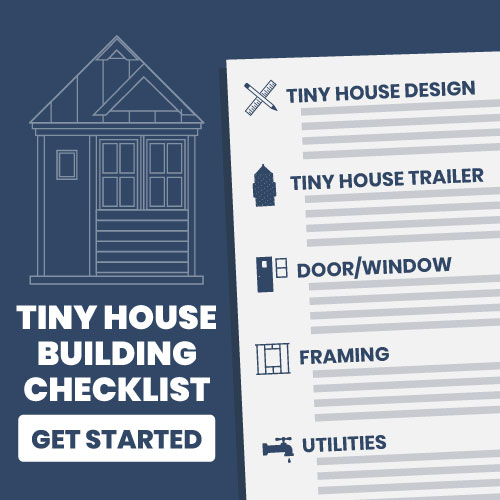 When it comes to tiny houses, the biggest mistake I see people make from a design perspective is not choosing a design aesthetic and sticking to it. People often have a list of “cool ideas” from Pinterest and the mashup creates a Frankenstein house that doesn’t look good.
When it comes to tiny houses, the biggest mistake I see people make from a design perspective is not choosing a design aesthetic and sticking to it. People often have a list of “cool ideas” from Pinterest and the mashup creates a Frankenstein house that doesn’t look good.
Before I’m accused of being a purist, let me say that I’m less concerned about adhering to tradition and more concerned about a practical design that works well. The various traditional styles of houses have developed over time because they were practical to their climate. The materials they use are suited to their climate, they’re organized in a practical way for low maintenance, and they stand on their own as a design style because they’ve been iterated to a point where they are visually appealing.
A Spanish villa has adobe walls and a clay tile roof, not because it looks good, but because it’s very practical for that environment: a hot, dry climate where heat is a bigger concern than water or cold winters. Colonial homes, on the other hand, have clean, simple lines and are often just a box shape with not a lot of decorations. This is because when settlers built them, they were simple to build for a practical life in a British colony where everyday life was difficult and resources were scarce.
Tiny House Siding Costs

Price is the main thing most people concern themselves with and for good reason—siding can be expensive and most of us are on a budget. I always say that your roof and your trailer are places you should always buy the best, even if you have to make some sacrifices in other areas. After that, I’d say prioritize windows and doors, and then finally insulation and siding.
Your siding is one of the largest exterior surfaces of your tiny home, so you want to make a good decision because it requires a good bit of upkeep and it protects your sheathing and wall framing. Luckily, because a tiny house is so small, you can buy some pretty high-quality siding materials and it won’t add up to much cost.
For example, cedar siding would normally cost an exorbitant sum of money for a traditional home, but for my tiny house, I spent about $1,000 to trim out and side my entire house in it. Check out my tiny house cost guide to see more about what expenses you can factor into your build.
| Life Expectancy (yrs) | Cost Per Sq/Ft | Cost/Year Ratio | |
|---|---|---|---|
| Pine Wood Siding | 10 | $3 | .3 |
| Fir Wood Siding | 15 | $4 | .26 |
| Cedar Wood Siding | 20 | $6 | .3 |
| LP SmartSide | 20 | $3.50 | .175 |
| Hardie Board | 30 | $4 | .13 |
| T1-11 | 20 | $1 | .05 |
| Vinyl Siding | 30 | $.85 | .02 |
| Corrugated Metal Siding | 40 | $1.25 | .03 |
| Standing Seam Metal | 50 | $5 | .1 |
| Aluminum Siding | 30 | $4 | .1 |
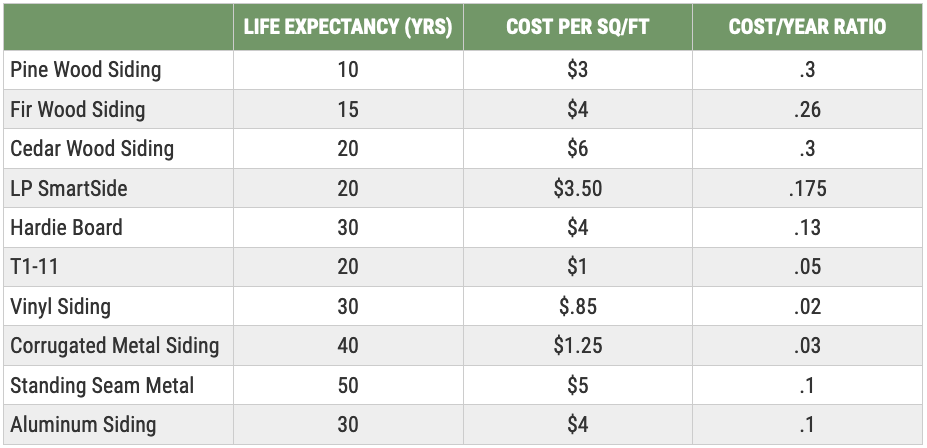
Tiny House Siding Options

Hopefully you’ve narrowed down your options for your siding based on your budget and your house style, but I thought I’d break down the different options for siding your tiny home. When choosing cladding, while material and cost are big factors, you also want to consider how much your siding weighs, how durable it is, how easy it is to install, and more.
| Average Lifespan | Cost Per Sq/Ft | Weight Per Sq/Ft | Ease of Install | Durability | Bug/Mold Resistance | Fastening Method | |
|---|---|---|---|---|---|---|---|
| Pine Wood Siding | 10 | $3 | .3 | Stainless Nail | |||
| Fir Wood Siding | 15 | $4 | .26 | Stainless Nail | |||
| Cedar Wood Siding | 20 | $6 | .3 | Stainless Nail | |||
| LP SmartSide | 20 | $3.50 | .175 | Hot Dipped / Stainless | |||
| Hardie Board | 30 | $4 | .13 | Hot Dipped / Stainless | |||
| T1-11 | 20 | $1 | .05 | Hot Dipped / Stainless | |||
| Vinyl Siding | 30 | $.85 | .02 | Hot Dipped / Stainless | |||
| Corrugated Metal Siding | 40 | $1.25 | .03 | Hex Screw w/EPDM Washer | |||
| Standing Seam Metal | 50 | $5 | .1 | Coated Exterior / Stainless | |||
| Aluminum Siding | 30 | $4 | .1 | Hot Dipped |
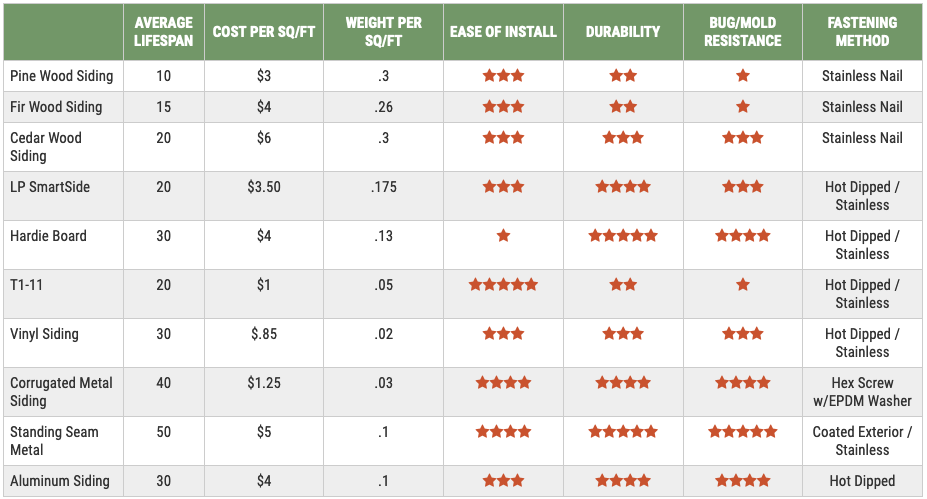
Pine Wood Siding

| Pine Wood Siding | |
|---|---|
 |
|
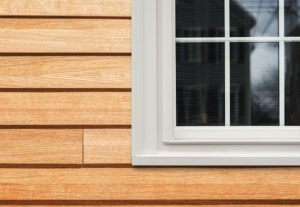 |
|
| Lifespan | 10 Years |
| Cost per Sq/Ft | $3 |
| Weight per Sq/Ft | 1.5 lbs |
| Ease of Install | |
| Durability | |
| Bug Resistance | |
| Fastening Method | Stainless Nail |
Pine board is about the cheapest siding option you’re going to get outside of T1-11. This lap siding can last about 10 to 15 years if you install it properly and give it regular maintenance. This siding is great for a more traditional look, and lap siding performs really well.
Since pine is prone to rotting if not installed or dried properly, it’s recommended that you stain or paint all sides of your siding before installing, including exposed sides from any cuts you make. Additionally, a rain screen is a great idea to help keep both sides of the siding dry.
It’s also important to note that the cell structure of pine makes it a wood that is less stable. This means that it’s more prone to movement, warping, and twisting.
PROS
- Inexpensive
- Widely available
- Easy to work with
CONS
- Doesn’t last as long as some options
- Prone to rot and bug damage
- Soft wood marks and dents easily
Douglas Fir Wood Siding

| Douglas Fir Wood Siding | |
|---|---|
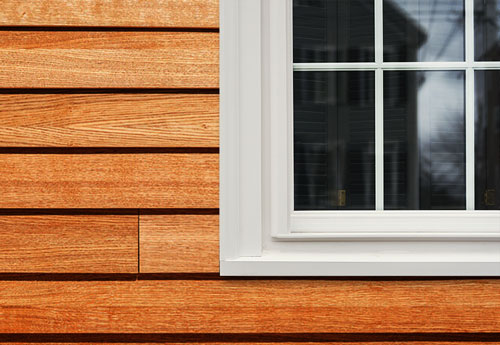 |
|
| Lifespan | 15 Years |
| Cost per Sq/Ft | $4 |
| Weight per Sq/Ft | 1.8 lbs |
| Ease of Install | |
| Durability | |
| Bug Resistance | |
| Fastening Method | Stainless Nail |
Douglas fir siding is a slight bump in cost over pine board siding, but has a few minor advantages. The main one being that when comparing similar grades of wood, Douglas fir has a tighter grain structure and more stable grain lines. This means the siding will be a bit more durable and less prone to warp and twist.
As a more stable wood option, it will be easier to work with because you’ll have less work to flex the siding into alignment as you hang it. It’s important to note that all wood will have movement, will warp, and can twist, but fir is less likely to and when it does, it’s usually not as drastic.
In most cases, the price difference will be minimal or possibly negligible, so this is usually an easy upgrade.
PROS
- Inexpensive
- Less wood movement than pine
- Easy to install
- Widely available
CONS
- Doesn’t last as long as some options
- Prone to rot
- Prone to bug damage
- Not as durable as some other options
Cedar Wood Siding

| Cedar Wood Siding | |
|---|---|
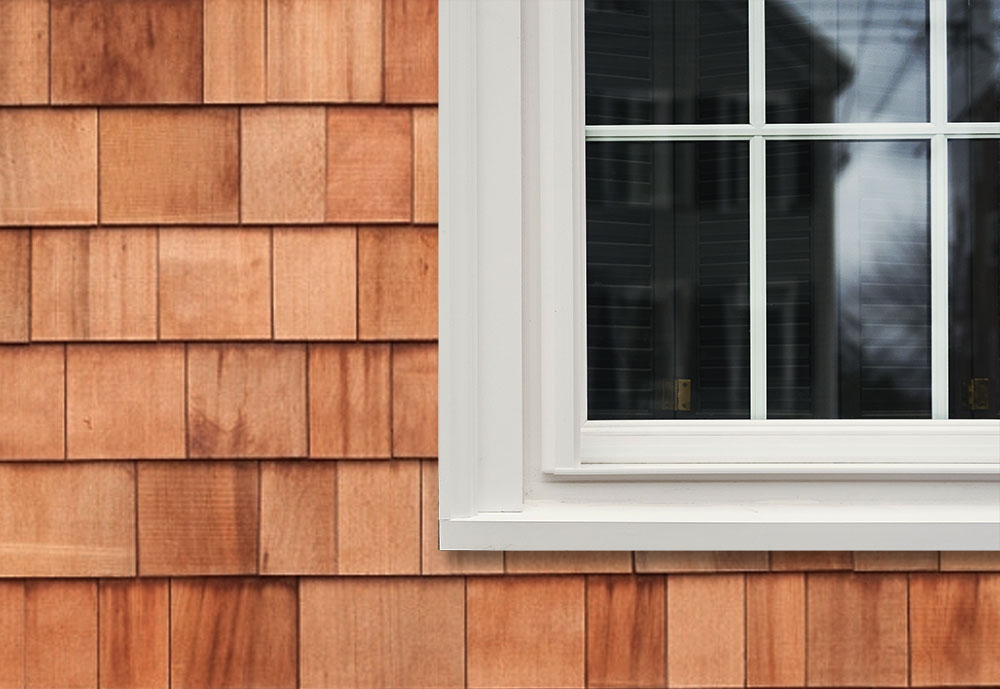 |
|
| Lifespan | 20 Years |
| Cost per Sq/Ft | $6 |
| Weight per Sq/Ft | 1.6 lbs |
| Ease of Install | |
| Durability | |
| Bug Resistance | |
| Fastening Method | Stainless Nail |
Cedar siding is probably your best bet if you want to have wood siding. While I’m usually pretty insistent that your exteriors should be metal or composites, cedar is the next best thing if you can’t afford those options.
Cedar wood in naturally rot and bug resistant, however I’ve found that carpenter bees really love my cedar fascia boards on my tiny house. Overall, though, I’ve found that my cedar siding has held up really well. After 7 years, I decided to sand my entire house down and re-stain it. The whole process took about 25 hours of sanding and then about 2 hours to stain it again.
Cedar is more expensive, but if you’re going to go with wood, it’s the best option. I spent around $1,000 for my siding and trim. If I were to do it all again, I’d go with Hardie board, even though doing so would change the aesthetic of my tiny house a lot—right now it’s a craftsman feel, which I love.
PROS
- Bug and rot resistant
- Longer lasting than other woods
- Easy to work with
CONS
- Most expensive of wood options
- Not totally bug resistant
- Still requires maintenance
LP SmartSide

| LP Smartside Siding | |
|---|---|
 |
|
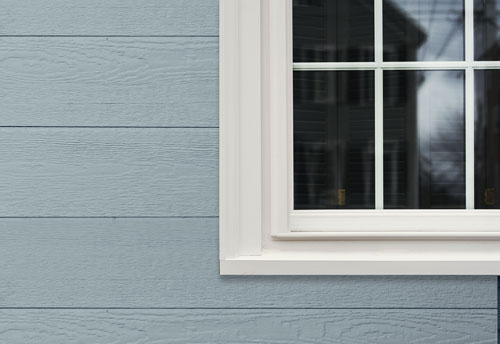 |
|
| Lifespan | 20 Years |
| Cost per Sq/Ft | $3.50 |
| Weight per Sq/Ft | 2.5 lbs |
| Ease of Install | |
| Durability | |
| Bug Resistance | |
| Fastening Method | Hot Dipped |
LP SmartSide Siding is a new player on the market just in the past year or so, and I feel like it’s something to keep an eye on. My hesitation with it is the fact that it’s still made of a wood material, though it has been treated and processed to be much more durable.
In all honesty, I’m not sure it’s worth the up charge, because it falls prey to many of the downsides of wood and is less forgiving when it gets wet. It’s roughly 10-15% cheaper than Hardie board but doesn’t have the same extensive warranty.
I’ll set aside the issue of actually getting the companies to hold up their side of the bargain in warranty claims, as that’s a whole can of worms in its own right. That said, LP SmartSide siding has a 5/50 year warranty, meaning it’s a full-coverage warranty for the first 5 years, then is prorated down 2.2% each year after that.
Hardie board comes with a flat 30-year warranty without any tricky math, which I think says a lot about the quality, even if it can be difficult to get either company to handle warranty claims. For 10-15% more, Hardie seems the way to go for me.
PROS
- Longer lasting than traditional wood
- Reasonable cost vs performance
- Manufactured good is more stable
- Has a warranty
CONS
- Still made of wood product
- Newer on the market
- Price might not be worth it
- Special order item
Hardie Board / Cement Board Siding

| Hardie Board Siding | |
|---|---|
 |
|
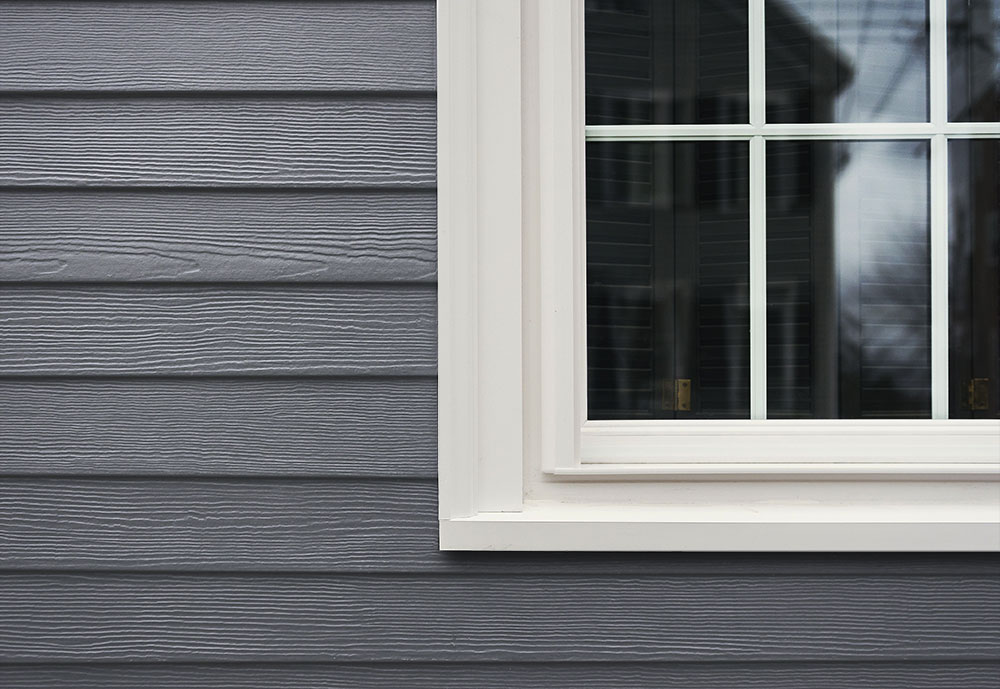 |
|
| Lifespan | 20 Years |
| Cost per Sq/Ft | $4 |
| Weight per Sq/Ft | 2.3 lbs |
| Ease of Install | |
| Durability | |
| Bug Resistance | |
| Fastening Method | Hot Dipped |
Hardie Board is my personal recommendation because the material is very durable, is manufactured for a crisp finish, and is a very stable material. If you live in areas with wildfires, this siding is also rated to be fire resistant in addition to being very resistant to bug damage.
Hardie board (and the competition’s version of cement board) blends cement, fine sand, wood fibers, and water to make its substrate. I’ve heard from a lot of home owners with this that they love this siding. There are some particulars on installation that you need to get right, but if you do, this siding will last you for decades.
What is more, they now offer pre-painted boards that are factory applied which is significantly more durable than being hand-painted even with high-quality paints. These pre-painted board reduce a ton of time on labor and are painted on all sides, meaning that while there is a higher cost for the product itself, the cost savings of not requiring house painters can meanbreaking even or saving money on your build.
The downsides are that it is more expensive than most options, it can be more difficult to cut because of the cement, and it’s also one of the heavier siding options.
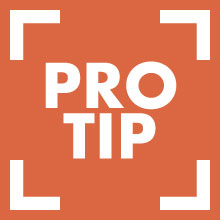 Hardie board comes in standard lap siding, board and batten, large sheets, and trim pieces so you can use it on almost any tiny house design style.
Hardie board comes in standard lap siding, board and batten, large sheets, and trim pieces so you can use it on almost any tiny house design style.
PROS
- Very durable
- Long lasting
- Bug and rot resistant
- Factory painted option available
CONS
- More expensive than most
- More difficult to work with and to cut
- Requires respirator while cutting
- Heavier than other options
T1-11 Siding

| T1-11 Siding | |
|---|---|
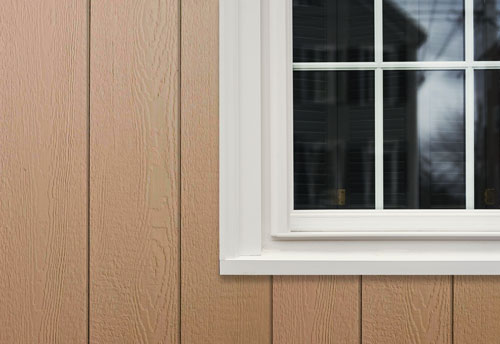 |
|
| Lifespan | 20 Years |
| Cost per Sq/Ft | $1 |
| Weight per Sq/Ft | 1.8 lbs |
| Ease of Install | |
| Durability | |
| Bug Resistance | |
| Fastening Method | Hot Dipped |
If you don’t know what this product is, it’s essentially made of wood pulp with some bonding agent that’s treated and coated into a 4 by 8-foot sheet. This stuff was popular in the 80s but has since fallen out of use. It’s very inexpensive and since it comes in sheets, you can clad a tiny house very quickly.
I’ll just be blunt here: T1-11 is a bad idea for so many reasons. It is very popular for sheds because it’s cheap, and while T1-11 and its modern equivalents have certainly progressed in many ways over the years, it’s still a poor choice.
The companies selling these products will make some pretty big claims about its ability to deal with moisture. But I’ve found that this stuff quickly rots, molds, and falls apart when in contact with moisture. In fact, I’ve seen this happen enough times that I’d never use the stuff.
PROS
- Inexpensive
- Covers a lot of area quickly
- Widely available
CONS
- Prone to moisture damage
- Fake wood look
- Not very durable
Vinyl Siding

| Vinyl Siding | |
|---|---|
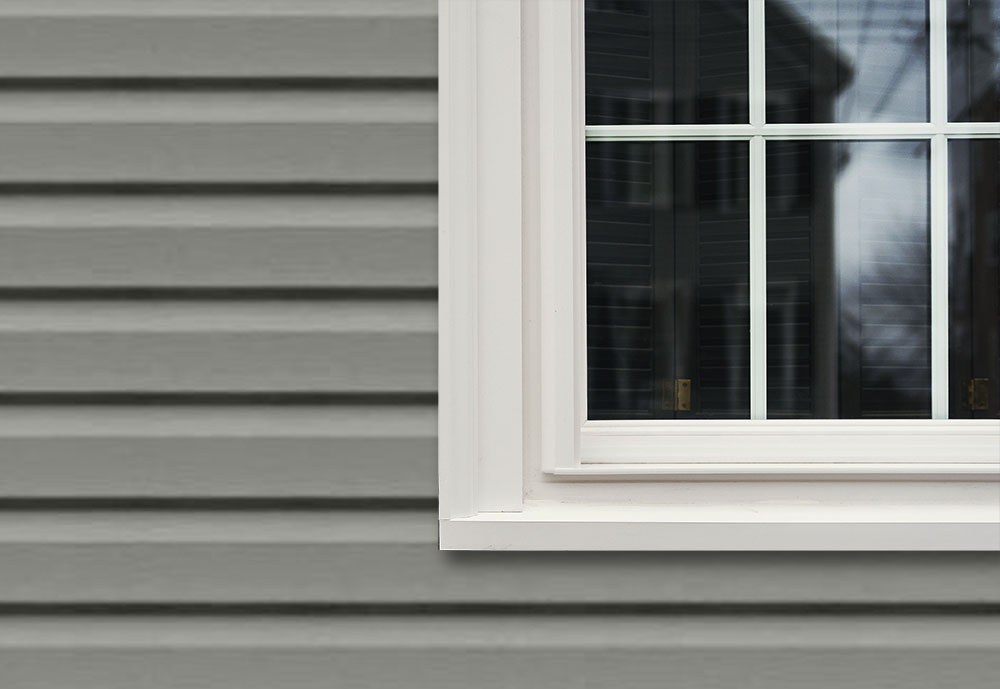 |
|
| Lifespan | 30 Years |
| Cost per Sq/Ft | $.85 |
| Weight per Sq/Ft | .45 lbs |
| Ease of Install | |
| Durability | |
| Bug Resistance | |
| Fastening Method | Hot Dipped |
Vinyl siding is an attractive option for tiny houses because it’s affordable, it’s very light weight, and — being a composite — it doesn’t rot like wood. There have been many tiny homes built with vinyl siding because of all these reasons, but one major drawback is that it’s prone to coming loose while driving down the road as you tow your tiny house.
The light-weight nature of vinyl siding has some big advantages. For one, the price comes in as one of the most affordable options, letting you side your tiny home for as little as $600. Compare that to cedar siding which would be about $1,000 for the same house or Hardie board for $1,600.
That said, this is one place where I’d rather save up to get top of the line given the difference between the cheapest option (vinyl) and the premium option (Hardie board) is only $1,000. I’m a big proponent of spending money in certain places while saving in others, and this is one place I’d delay building to save up for the better option if I had to.
PROS
- Lightweight
- Very affordable
- Rot resistant
CONS
- Can come off while towing
- Has been known to melt or mildew
- Less premium feel
Corrugated Metal Siding

| Corrugated Metal Siding | |
|---|---|
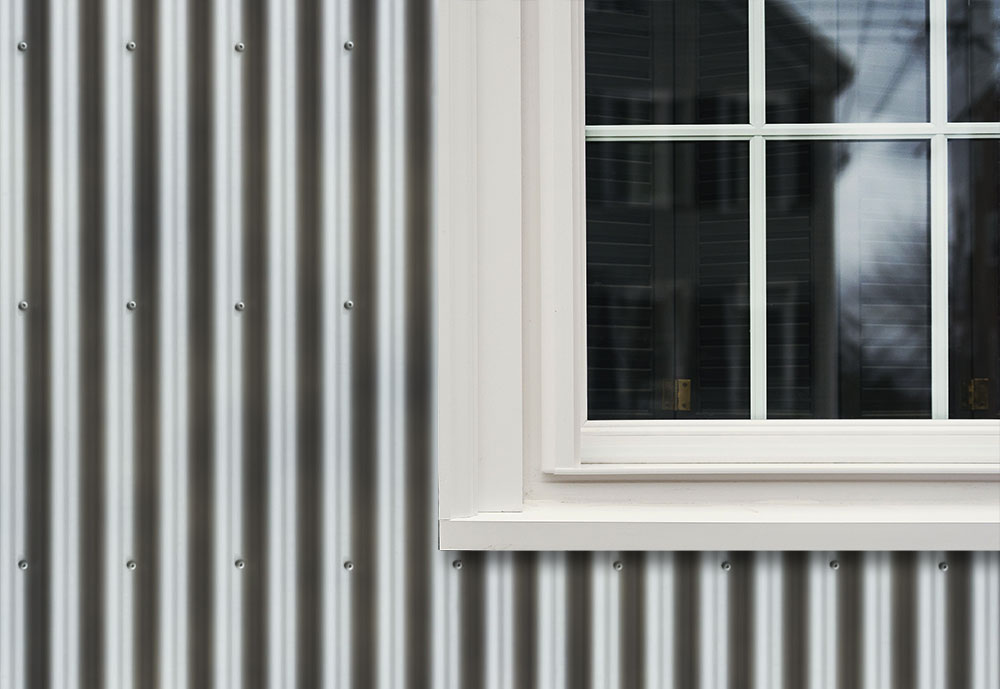 |
|
| Lifespan | 40 Years |
| Cost per Sq/Ft | $1.25 |
| Weight per Sq/Ft | 1.2 lbs |
| Ease of Install | |
| Durability | |
| Bug Resistance | |
| Fastening Method | Hex Screw |
This is an interesting option because corrugated metal sheets are extremely durable, large so you can cover big areas quickly, andvery affordable. These panels also have the benefit of being bug and rot resistant and will protect your home in wildfires if your local code requires that.
Most of these panels are now galvanized and will not rust for a very long time, though some people prefer the rust for a weathered look. The two downsides are that it can be hard to cut because it’s metal and, because it can be a condensing surface, a rain screen is a must.
You’ll want to use EPDM washer screws which should last you 10 years or so, at which time they’ll need to be replaced. However, these aren’t totally necessary because it’s a vertical surface, and with a good rainscreen you should be fine.
This type of cladding definitely falls into the modern category, or maybe a rustic ranch look.
PROS
- Very affordable
- Very durable
- Covers a large area quickly
- Fire, rot, and bug resistant
CONS
- Can be tricky to cut
- Works with specific design styles
- Requires a rain screen
- Condensing surface could lead to moisture issues
Standing Seam Metal Siding

| Standing Seam Metal Siding | |
|---|---|
 |
|
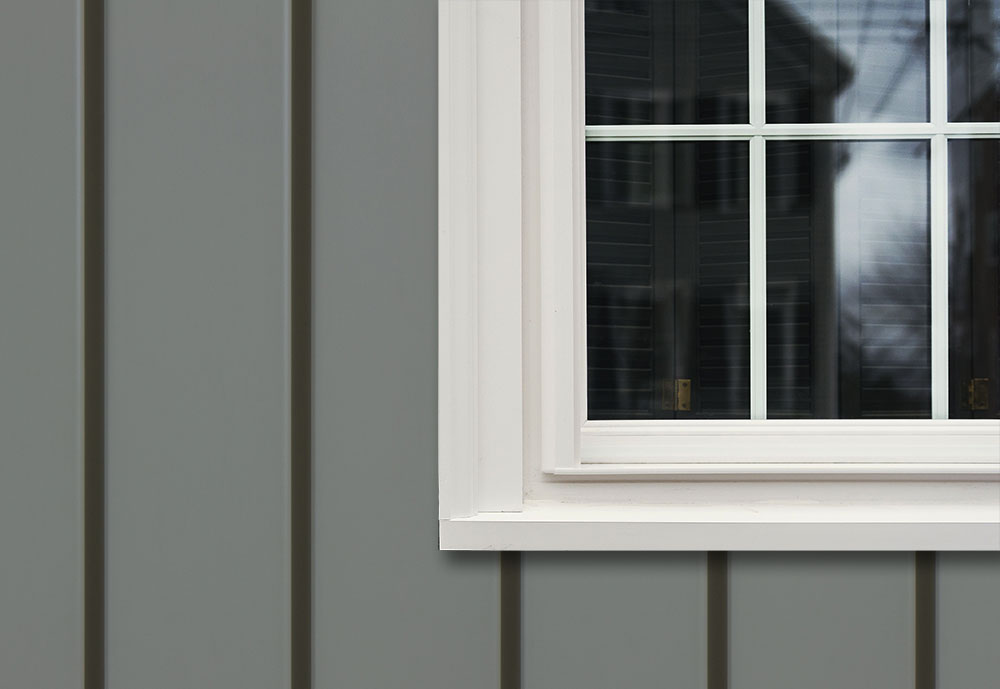 |
|
| Lifespan | 50 Years |
| Cost per Sq/Ft | $5 |
| Weight per Sq/Ft | 1.3 lbs |
| Ease of Install | |
| Durability | |
| Bug Resistance | |
| Fastening Method | Stainless Nail |
If I were building a very modern looking house, this would be my siding of choice for both the roof and the siding of my tiny home. Standing seam is a very durable and high-quality material that has all the benefits of corrugated metalbut with a cleaner look and the added benefit of being a hidden fastener attachment, meaning that there are no fastener holes exposed for water to leak in through.
Because this is metal, moisture condensing on a cool side is something you need to manage for, so I’d suggest a great rain screen with enough space for air to dry behind your metal walls.
The downsides to this is that it’s one of the most expensive options out there and I’ve found that it often requires professional installation. If you have a very simple install (read: a perfect square box) then it may be possible to do yourself, but most of the trim is often custom made to make sure it fits tightly.
PROS
- Clean lines
- Very durable – 50 years
- Covers a large area quickly
- Fire, rot, and bug resistant
CONS
- Very expensive
- Hard to work with
- May require professional installers
- Special order item
Aluminum Siding

| Aluminum Siding | |
|---|---|
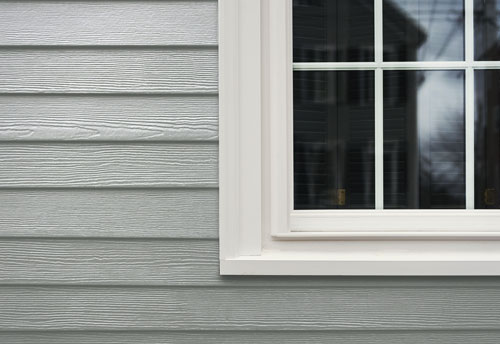 |
|
| Lifespan | 40 Years |
| Cost per Sq/Ft | $4 |
| Weight per Sq/Ft | 1.2 lbs |
| Ease of Install | |
| Durability | |
| Bug Resistance | |
| Fastening Method | Hot DIpped |
This has largely fallen by the wayside, because while there are a lot of benefits, the cost/benefit ratio just doesn’t seem to be there. At this cost, it’s only a little cheaper than standing seam metal and it’s the same cost as Hardie board.
While it is lightweight and durable, I’d say it’s best to look elsewhere.
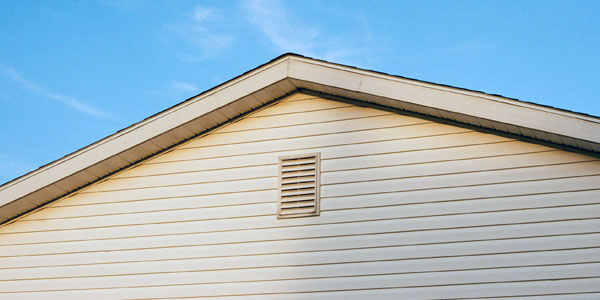
PROS
- Lightweight
- Durable
- Bug and rot resistant
CONS
- Higher cost
- Less availability at local stores
- May require professional installation
Siding Design Styles

You have several choices in the design style of your tiny house siding. Here are some of the popular styles you’ll find.
 Lap Siding
Lap Siding
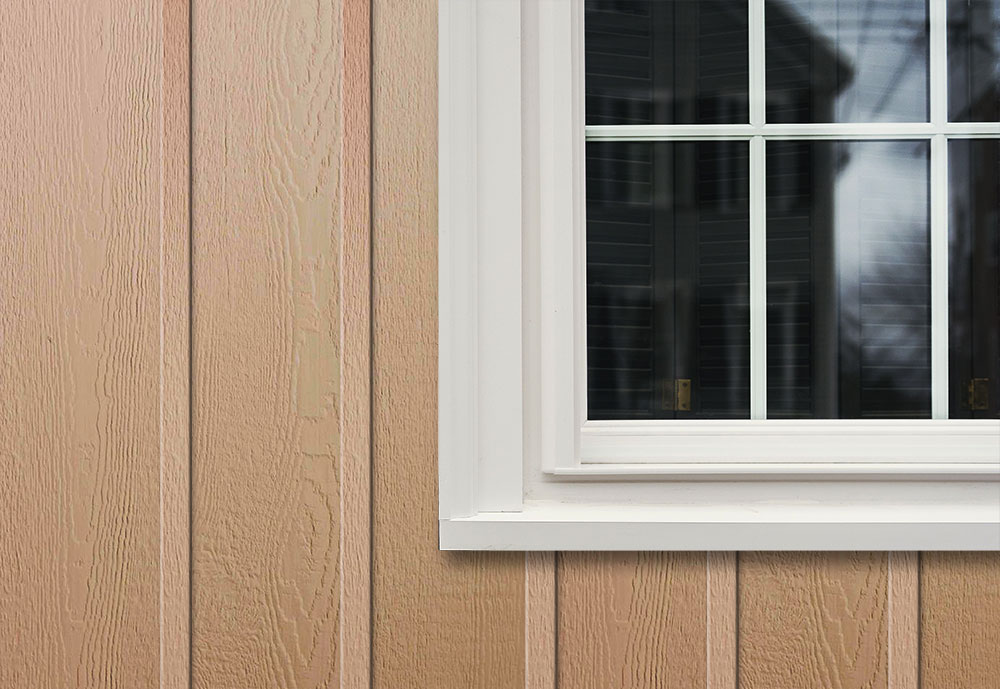 Board and Batten Siding
Board and Batten Siding
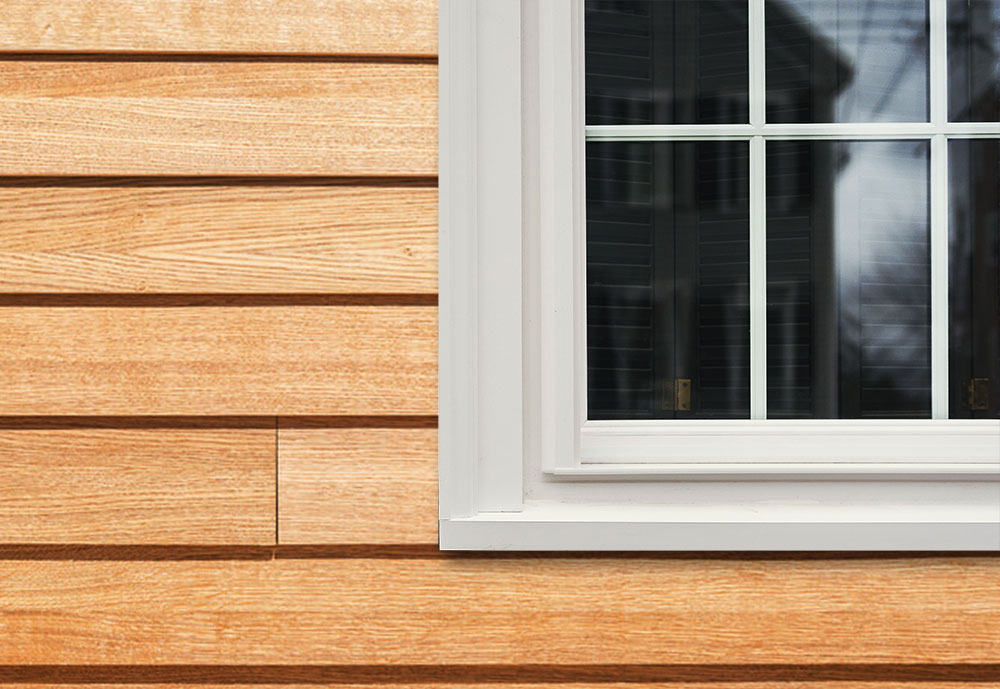 Clapboard Siding
Clapboard Siding
 Cedar Shake Siding
Cedar Shake Siding
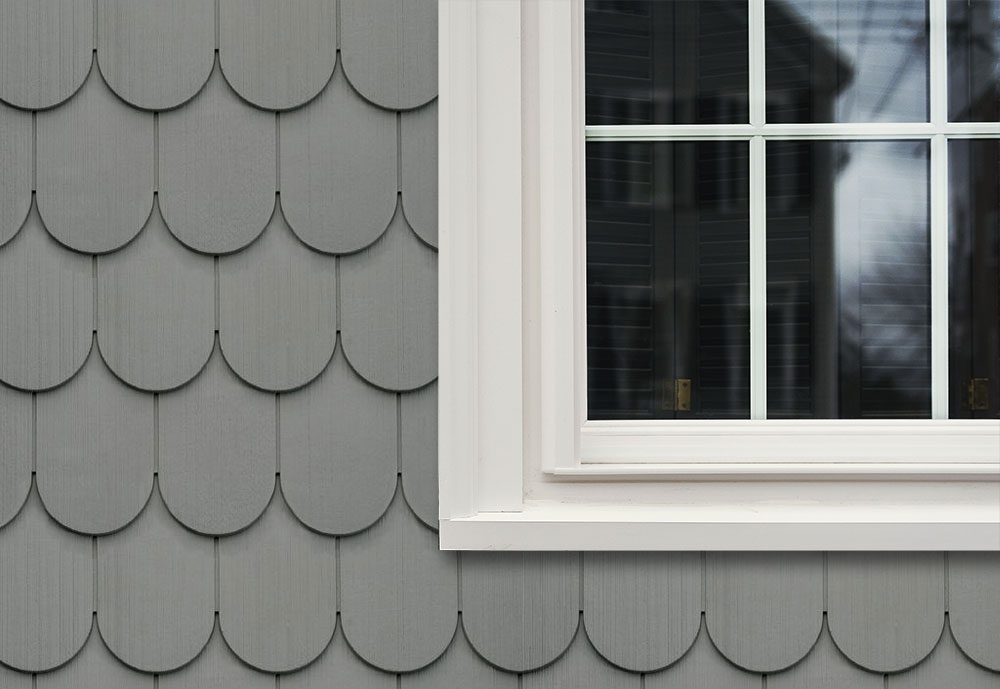 Scalloped Siding
Scalloped Siding
 Corrugated Metal Siding
Corrugated Metal Siding
 Standing Seam Metal Siding
Standing Seam Metal Siding
 Dutch Lap Siding
Dutch Lap Siding
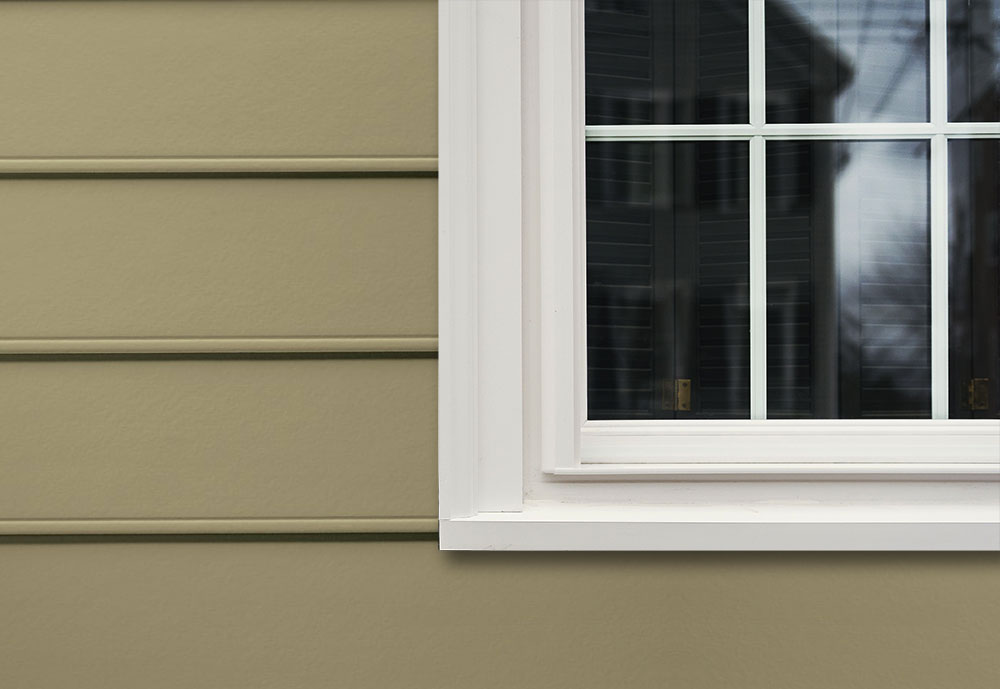 Beaded Siding
Beaded Siding
Low Maintenance Exterior Options For Tiny Houses

One of the big questions with any exterior siding is what’s the expected maintenance, as many people are looking for options that will be a low-maintenance option. The best advice I can give you is to consider options that are composites or coated metals.
Another factor to consider is your environment. Is your house located under a tree that drops sap, leaves, or needles? Is your climate particularly rainy or brutally hot? If so, be sure to consider these factors.
You also want to make sure that your tiny home design helps protect the siding with good overhangs. I’d suggest at least one-foot overhangs on your tiny home.
Finally, you want to be sure that the ground around the base of your home has gravel and drains well. Having gravel from your house edge out about two feet will help prevent water from hardpan developing and thus reduce back splash onto your siding. Where possible, have your house’s trailer mounted up at least one foot off the ground.
Siding Maintenance Chart


Exterior Trim

Trim pieces are the elements that frame the actual siding. Your doors, windows, and corners of the house are traditionally “trimmed out” first, then your siding is added from the bottom up.
Exterior Trim Material Options

You have several options for the material that you trim your house with. In general, you’ll want to use the same type of material you side your house with, but there may not be options available or they may be hard to find.
If you do have to mix siding and trim materials, you’re going to want to be sure your paint looks the same and account for variation in expansion and contraction coefficient. For example, metal will expand differently than wood when it gets hot.
Wood Trim
PROS
- Least expensive
- Widely available
- Easy to work with
CONS
- Prone to rot
- Not super durable
- Prone to bug infiltration
Fiber Cement Trim
PROS
- Long lasting
- Low maintenance
- More stable
CONS
- Higher cost
- Special order item
- Difficult to work with
Cellular PVC Trim
PROS
- Long lasting
- Low maintenance
- Widely available
CONS
- More costly
- Prone to expansion/contraction
- May take paint differently than wood
Door Casing

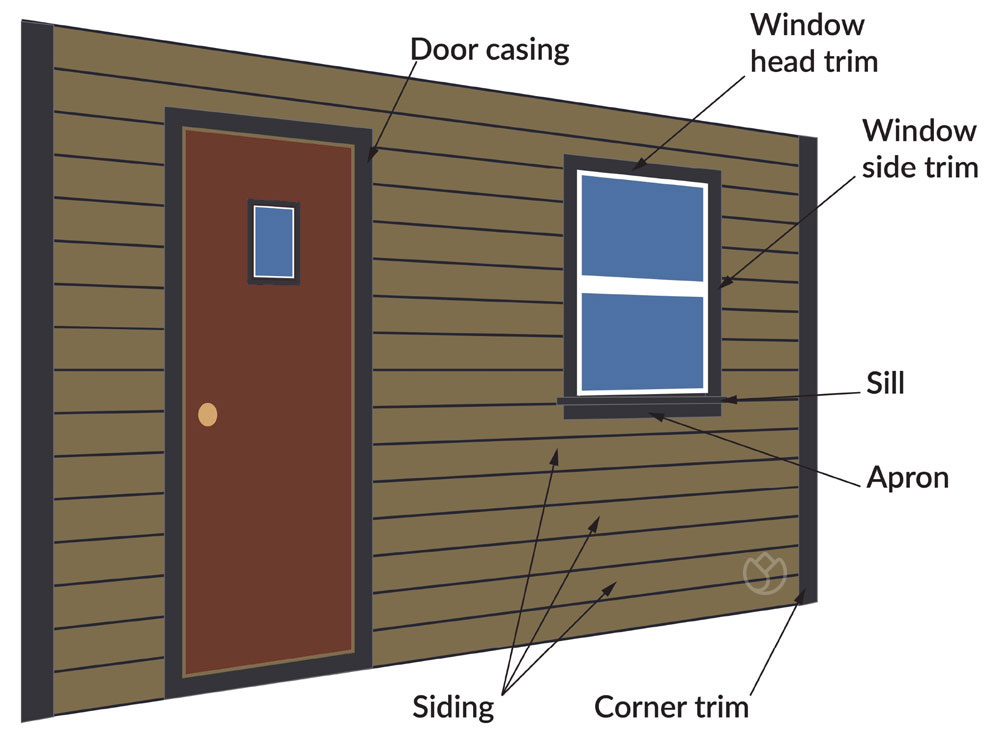 After you’ve framed out your door’s rough opening, you’re going to drop in your door frame and shim it. At that point, you’ll want to trim out the door so it looks presentable and allows you to have a clean edge to butt your siding up against.
After you’ve framed out your door’s rough opening, you’re going to drop in your door frame and shim it. At that point, you’ll want to trim out the door so it looks presentable and allows you to have a clean edge to butt your siding up against.
Window Trim

Your window trim is handled the same way your door is. After dropping your window into the rough opening, flashing, and shimming it, you’ll want to trim out by framing the window. There are several different styles and approaches to this, so consider what works best for your tiny home. Also note that there are different decorative ways to trim your windows, so consider what would be right for you and your home’s design.
Corner Trim

You have three main ways to trim out your corners: butt joints, miter joints, or routed corner molding. A butt joint is very simple, where you just put one board over the end of the other—this is what I did. Just make sure you have your overlapping pieces all on the long side of your house or all on the short side of your house, so when you stand back it looks consistent.
A miter joint can make things look a little nicer, but requires a little more work and can be finnicky. The last option is a router molding piece that’s going be made of a single piece of flat stock, but has the back side of the trim piece routed out so it can cover the corner like a cap.
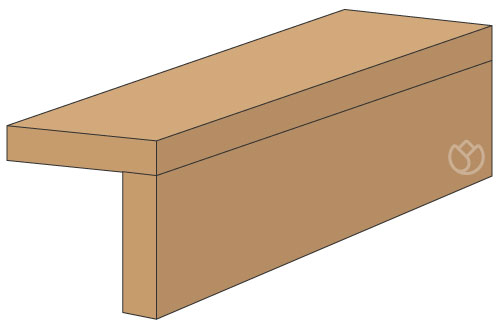 Butt Joint
Butt Joint
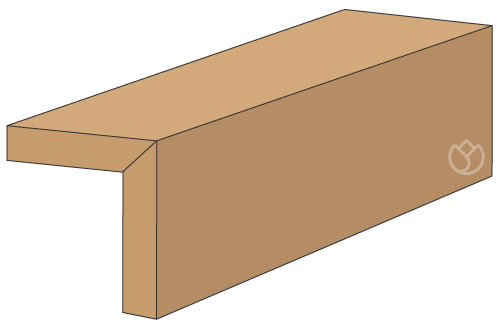 Miter Joint
Miter Joint
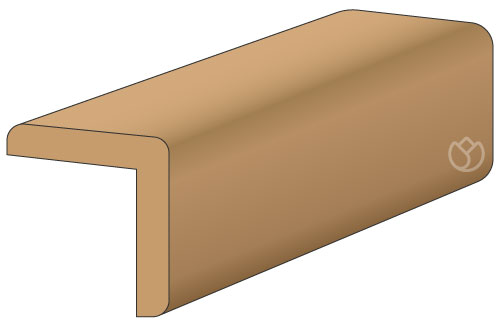 Rounded Corner Joint
Rounded Corner Joint
Drip Edge

Drip edge is one of those things I somehow didn’t know existed until after I was done with my own build and I wish I knew before. It’s very inexpensive and simple to install, but can greatly improve the longevity of other materials.
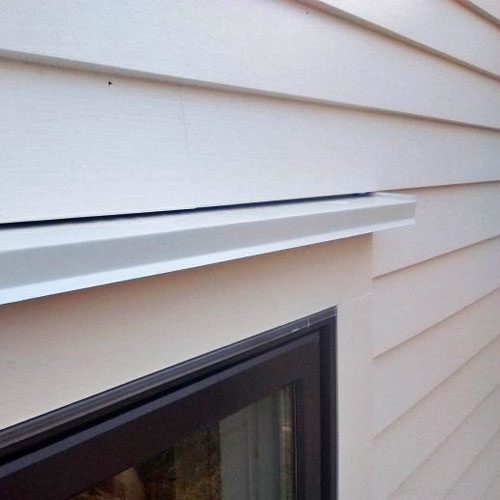
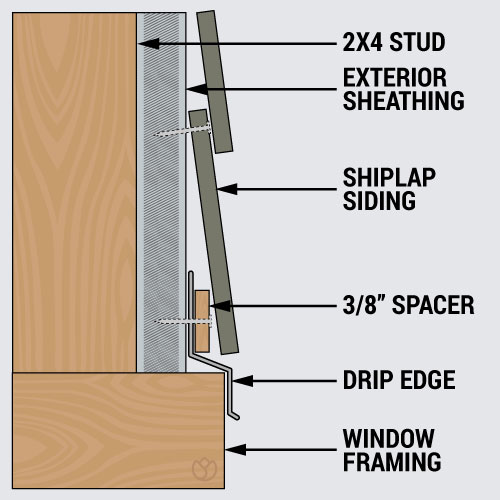
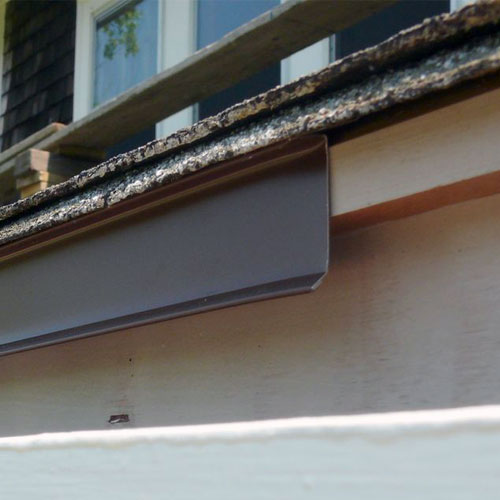
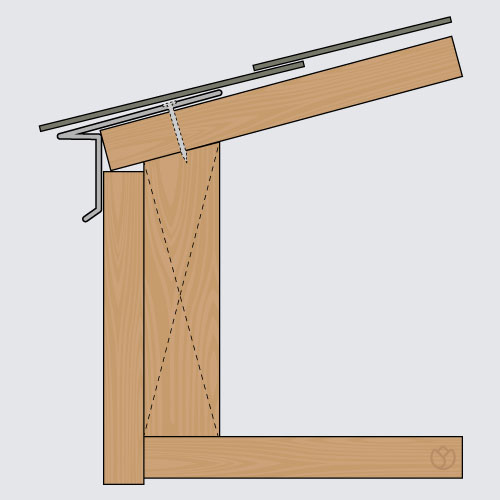
How To Install Tiny House Siding

There are many details when it comes to installing your siding, but I wanted to cover the basics here because there are a few points that are kind of counter intuitive.
Step 1: Check sheathing is sealed & weather barrier is properly installed
Step 2: Prime all sides of your siding, including backside
Step 3: Trim your corners, windows, doors, and penetrations
Step 4: Cut siding to fit, then paint fresh cut edges before installing
Step 5: Mark siding increments on either end where siding will be installed
Step 6: Install starter strip at bottom first, making sure it’s perfectly level
Step 7: Work bottom to top, each layer covering top of previous board
Step 8: Once you work your way to top, finish off top with frieze board
Step 9: Caulk edges and joints to manufacturers specifications
Step 10: Seal with a final coat of paint
Reclaimed Wood Siding

Reclaimed siding is a great way to reduce landfill waste and possibly save money. Reclaiming wood siding is a very labor-intensive process and it can be difficult to find enough of similar proportioned wood to side an entire house.
Before you go this route, consider the time that it will take to strip down all the boards, clean them up, and other steps that might be too much work. It’s also not always without cost: you may have to pay for the materials if you have to buy them (even with a good deal). Then you’ll have to factor in consumables like sanding discs or tools to process them like a sander, or maybe even a wood planer.
Your Turn!
- What are you considering for your tiny house siding?
- What tiny house siding tips can your share?
 Choosing Materials
Choosing Materials

While tiny houses are indeed legal throughout the U.S., there are many different laws governing tiny homes that vary by state, city, and town. According to the Tiny House Society, some areas are more tiny home-friendly than others. Tree Removal Longmont
Tiny home siding is the best way to get attraction and now a cheap and best siding is vinyl siding this is the least expensive way for siding.
What I liked the most about the tiny houses design is the cost. It’s cheap and affordable!
Health If you are no longer able to climb to a lofted sleeping area due to health issues, then many tiny house designs are not going to be suitable for you.
Looks like cedar siding is my best option for the look I want. I like hardie board but am concerned about the weight and cost. This information was extremely helpful and timely.
Thanks for this very thoughtful article. I built my tiny house and sided it with a combination of weathered corrugated metal and free teak flooring. I should have used cedar. I getting ready to build again. My biggest concerns are weight and extremes in climate with lots of wind, rain and cold snowy winters.